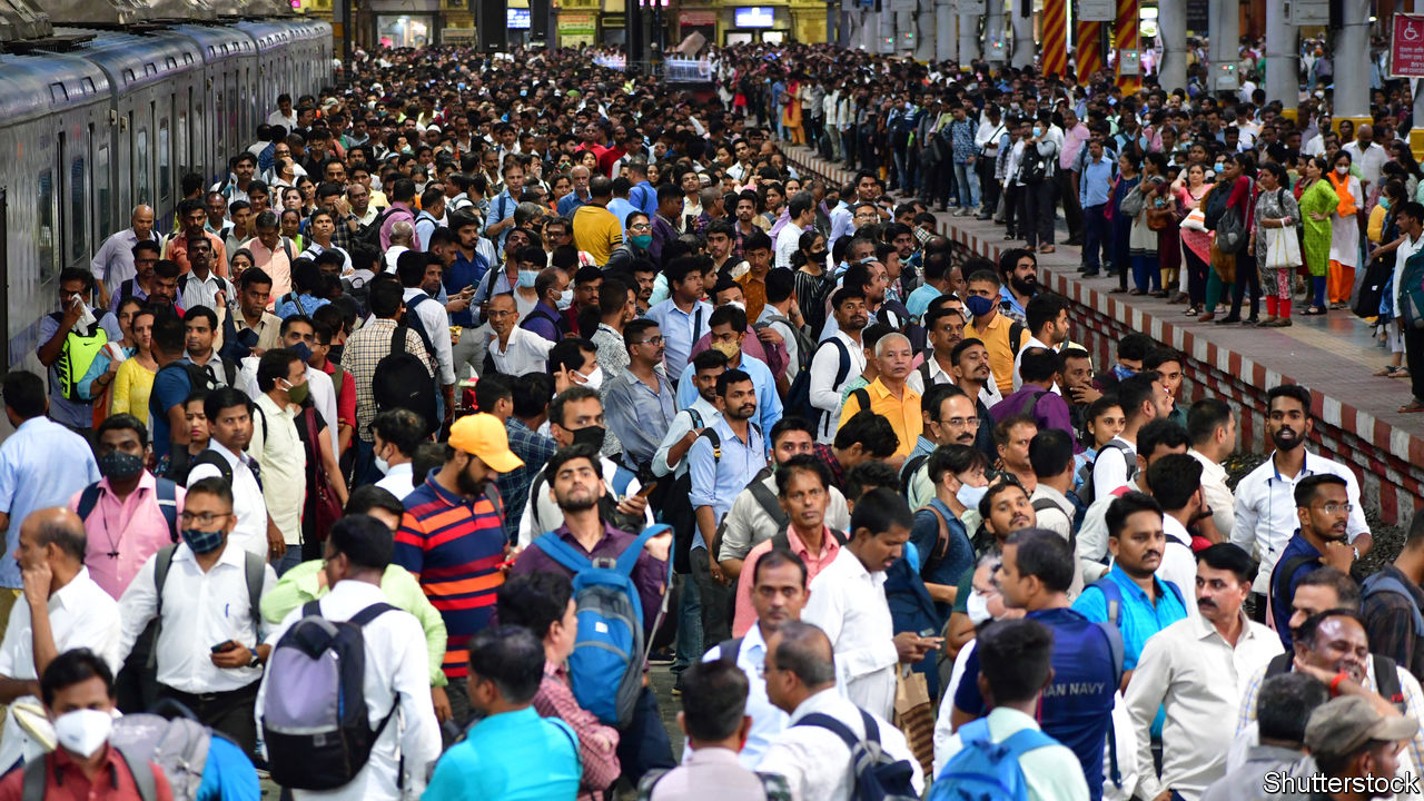
India will become the world’s most populous country in 2023
With China now suffering from a demographic slump, the UN guesses that India’s population will surpass it in April
 www.economist.com
www.economist.com

India will become the world’s most populous country in 2023
With China now suffering from a demographic slump, the UN guesses that India’s population will surpass it in April
India will become the world’s most populous country in 2023
China is now suffering from a demographic slump

Nov 14th 2022
Share
By Brooke Unger: Senior digital editor, The Economist
China has been the world’s most populous country for hundreds of years. In 1750 it had an estimated 225m people, more than a quarter of the world’s total. India, not then a politically unified country, had roughly 200m, which ranked it second. In 2023 it will seize the crown. The un guesses that India’s population will surpass that of China on April 14th. India’s population on the following day is projected to be 1,425,775,850.
The crown itself has little value, but it is a signal of things that matter. That India does not have a permanent seat on the un Security Council while China does will come to seem more anomalous. Although China’s economy is nearly six times larger, India’s growing population will help it catch up. India is expected to provide more than a sixth of the increase of the world’s population of working age (15-64) between now and 2050.
China’s population, by contrast, is poised for a steep decline. The number of Chinese of working age peaked a decade ago. By 2050 the country’s median age will be 51, 12 years higher than now. An older China will have to work harder to maintain its political and economic clout.

Both countries took draconian measures in the 20th century to limit the growth of their populations. A famine in 1959-61 caused by China’s “great leap forward” was a big factor in persuading the Communist Party of the need to rein in population growth. A decade later China launched a “later, longer, fewer” campaign—later marriages, longer gaps between children and fewer of them. That had a bigger effect than the more famous one-child policy, introduced in 1980, says Tim Dyson, a British demographer. The decline in fertility, from more than six babies per woman in the late 1960s to fewer than three by the late 1970s, was the swiftest in history for any big population, he says.
It paid dividends. China’s economic miracle was in part the result of the rising ratio of working-age adults to children and oldsters from the 1970s to the early 2000s. With fewer mouths to feed, parents could invest more in each child than they otherwise would have. But having more parents than children, an advantage when the children are young, is a drawback as the parents age. The country will now pay a price as the economic-boomer generation retires and becomes dependent on the smaller generation following behind it.
India now has a chance to reap its own demographic dividend
India’s attempt to reduce fertility was less successful. It was the first country to introduce family planning on a national scale in the 1950s. Mass-sterilisation campaigns, encouraged by Western donors, grew and were implemented more forcefully during the state of emergency declared by Indira Gandhi, the prime minister, in 1975-77. Under the direction of her son Sanjay, the government forced men into vasectomy camps on pain of having their salaries docked or losing their jobs. Policemen nabbed poor men for sterilisation from railway stations. Around 2,000 men died from bungled procedures.
Forced sterilisations ended after Indira Gandhi lost an election. Though brutal, the campaign was not thorough enough to cause a dramatic drop in India’s birth rate. India’s fertility has dropped, but by less, and more slowly than China’s. With a median age of 28 and a growing working-age population, India now has a chance to reap its own demographic dividend. Its economy recently displaced Britain’s as the world’s fifth-biggest and will rank third by 2029, predicts State Bank of India. But India’s prosperity depends on the productivity of its youthful people, which is not as high as in China. Fewer than half of adult Indians are in the workforce, compared with two-thirds in China. Chinese aged 25 and older have on average 1.5 years more schooling than Indians of the same age.
That will not spare China from suffering the consequences of the demographic slump it engineered. The government ended the one-child policy in 2016 and removed all restrictions on family size in 2021. But birth rates have kept falling. China’s zero-covid policy has made young adults even more reluctant to bear children. The government faces resistance to its plans to raise the average retirement age, which at 54 is among the lowest in the world. The main pension fund may run out of money by 2035. Yet perhaps most painful for China will be the emergence of India as a superpower on its doorstep.■
Brooke Unger: Senior digital editor, The Economist
This article appeared in the International section of the print edition of The World Ahead 2023 under the headline “Fatter elephant, leaner dragon”



